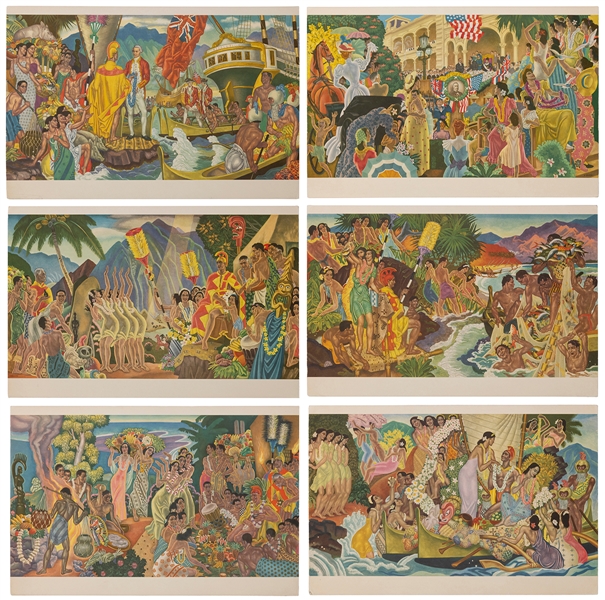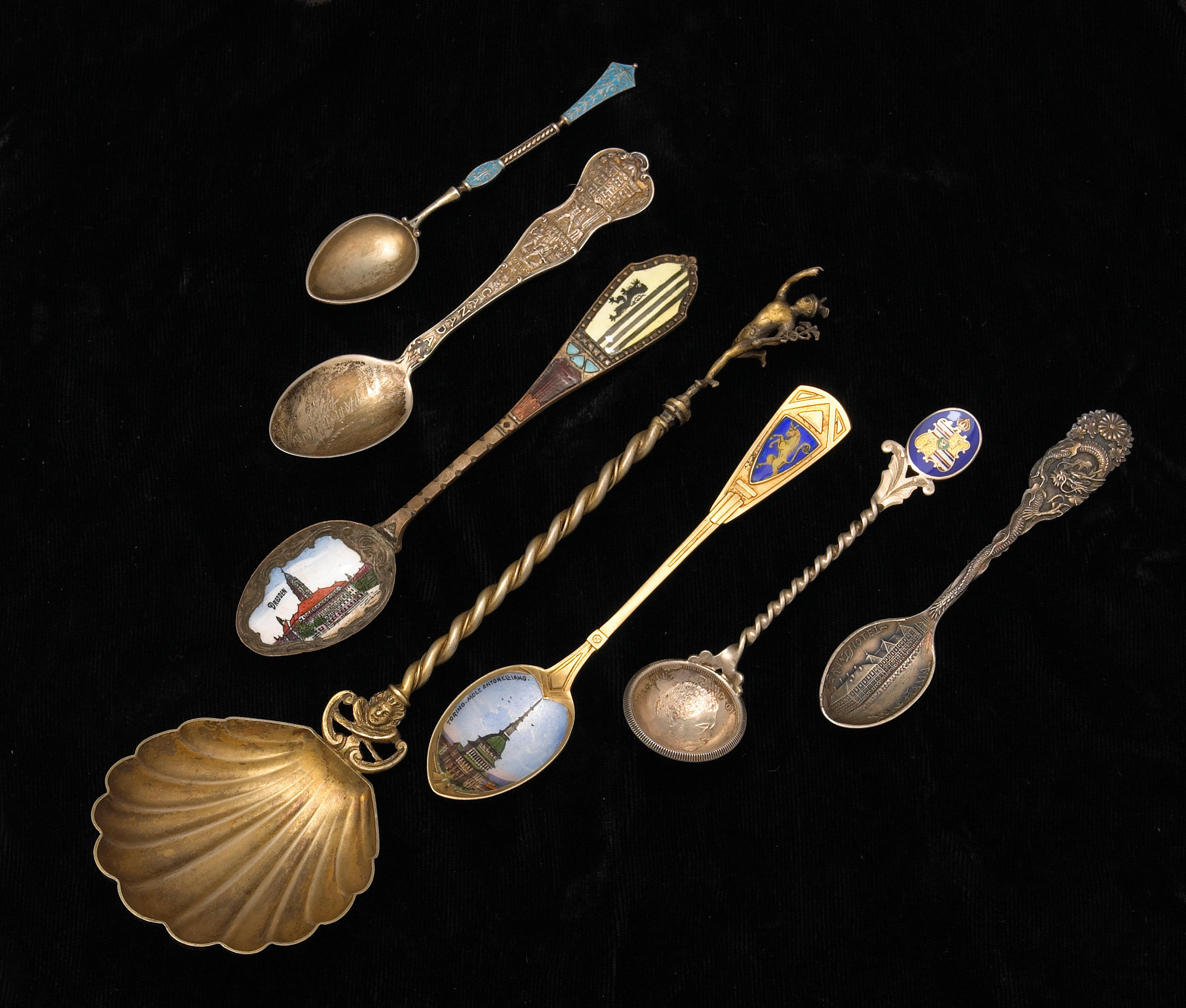1883, Hawaii Set of Four Silver Coins The circulating denominations are dime VF details (NCS) mounted, damaged; quarter 63 (NGC); half dollar AU details (NCS) improperly cleaned; dollar 64 (NGC). A lovely piece with attractive toning. A quartet that should attract attention. One of the provisions of the legal code of 1846, previously discussed, established standards for a Hawaiian monetary system and coinage. The system was tied explicitly to that of the United States. With a couple of exceptions that mirrored the Spanish Colonial values of 1 Real (1/8th dollar) and 1/2 Real (1/ 16th dollar) the coins were to be similar to their U.S. counterparts. The silver denominations were specified as: Dala, valued at 100 Keneta (Cents) American Currency (the Dollar); Hapalua, valued at 50 Keneta (Half Dollar); Hapaha, valued at 25 Keneta (Quarter Dollar); Hapawalu, valued at 12-1/2 Keneta (Eighth Dollar or One Real); 1/16 Dala (6 1/4 Keneta or 1/2 Real); as well as the aforementioned copper Keneta, or Cent. Though the copper coinage of 1847 turned out to be an unfortunate failure, King Kalakaua was determined that Hawaii demonstrate a tangible national identity by having its own coinage (and paper currency, as will be seen later in this sale). The monetary problems that had persisted at the Hawaiian Treasury for so long (i.e., lack of government funds) were still present, but trade with other countries was bringing some cash into the coffers. The United States especially felt that Hawaii was of such strategic importance that no other nation should be allowed to lay claim to her and foreign policy turned friendlier. Economic benefits began to manifest themselves, in no small measure due to Hawaii's growing sugar industry and free trade agreements (specifically the Reciprocity Treaty of 1876) with the U.S. As a result of these timely and favorable circumstances, a gentleman named Claus Spreckels (banker, financier, and sugar baron) approached the King in 1883 with a proposal for a Hawaiian silver coinage. He would put up the cash needed to buy silver bullion as well as other expenses necessary to produce the coins. He would also agree to accept the pieces at face value at his banking institution, and his commission would be the difference between the face value of the coins (which was to be $1 Million) and his costs. The King agreed with the proposal. Spreckels, acting as agent for the Hawaiian Government, contacted the U.S. Mint in Philadelphia and submitted sketches for consideration. The designs were modified by Mint Director Horatio C. Burchard and master dies and hubs were prepared by Mint Engraver Charles E. Barber Working dies (those that actually struck the coins) were fashioned and sent to the branch mint at San Francisco where production of the circulating coins took place. Originally, the order called for coins in denominations of One Dollar, Half Dollar, Quarter Dollar and Eighth Dollar (Hapawalu), but the latter value was abandoned (after a die had been produced) in favor of a Ten Cent piece (called "UMJ KENETA" or "ONE DIME"). The coins were to be of the same size, weight and fineness as their American counterparts. This not only made it easier for people to recognize the Hawaiian coins (having used American money in the local economy for some time) but also made it simpler and less costly to manufacture since major retooling at the mint was unnecessary. Six proof sets (not including the Hapawalu) were struck in Philadelphia before production of circulating coins commenced in San Francisco on November 17, 1883. Striking continued until June 1884 and when the order was completed 1,950,000 pieces had been minted. The quantities included 250,000 Dimes (Umi Keneta), 500,000 Quarters (Hapaha), 700,000 Half Dollars (Hapalua), and 500,000 Dollars (Akahi Dala). An additional 20 proof sets, this time including both the Dime and the Hapawalu, were also made in 1884 for presentation to dignitaries and officials. The dies that struck t
1883, Hawaii Set of Four Silver Coins The circulating denominations are dime VF details (NCS) mounted, damaged; quarter 63 (NGC); half dollar AU details (NCS) improperly cleaned; dollar 64 (NGC). A lovely piece with attractive toning. A quartet that should attract attention. One of the provisions of the legal code of 1846, previously discussed, established standards for a Hawaiian monetary system and coinage. The system was tied explicitly to that of the United States. With a couple of exceptions that mirrored the Spanish Colonial values of 1 Real (1/8th dollar) and 1/2 Real (1/ 16th dollar) the coins were to be similar to their U.S. counterparts. The silver denominations were specified as: Dala, valued at 100 Keneta (Cents) American Currency (the Dollar); Hapalua, valued at 50 Keneta (Half Dollar); Hapaha, valued at 25 Keneta (Quarter Dollar); Hapawalu, valued at 12-1/2 Keneta (Eighth Dollar or One Real); 1/16 Dala (6 1/4 Keneta or 1/2 Real); as well as the aforementioned copper Keneta, or Cent. Though the copper coinage of 1847 turned out to be an unfortunate failure, King Kalakaua was determined that Hawaii demonstrate a tangible national identity by having its own coinage (and paper currency, as will be seen later in this sale). The monetary problems that had persisted at the Hawaiian Treasury for so long (i.e., lack of government funds) were still present, but trade with other countries was bringing some cash into the coffers. The United States especially felt that Hawaii was of such strategic importance that no other nation should be allowed to lay claim to her and foreign policy turned friendlier. Economic benefits began to manifest themselves, in no small measure due to Hawaii's growing sugar industry and free trade agreements (specifically the Reciprocity Treaty of 1876) with the U.S. As a result of these timely and favorable circumstances, a gentleman named Claus Spreckels (banker, financier, and sugar baron) approached the King in 1883 with a proposal for a Hawaiian silver coinage. He would put up the cash needed to buy silver bullion as well as other expenses necessary to produce the coins. He would also agree to accept the pieces at face value at his banking institution, and his commission would be the difference between the face value of the coins (which was to be $1 Million) and his costs. The King agreed with the proposal. Spreckels, acting as agent for the Hawaiian Government, contacted the U.S. Mint in Philadelphia and submitted sketches for consideration. The designs were modified by Mint Director Horatio C. Burchard and master dies and hubs were prepared by Mint Engraver Charles E. Barber Working dies (those that actually struck the coins) were fashioned and sent to the branch mint at San Francisco where production of the circulating coins took place. Originally, the order called for coins in denominations of One Dollar, Half Dollar, Quarter Dollar and Eighth Dollar (Hapawalu), but the latter value was abandoned (after a die had been produced) in favor of a Ten Cent piece (called "UMJ KENETA" or "ONE DIME"). The coins were to be of the same size, weight and fineness as their American counterparts. This not only made it easier for people to recognize the Hawaiian coins (having used American money in the local economy for some time) but also made it simpler and less costly to manufacture since major retooling at the mint was unnecessary. Six proof sets (not including the Hapawalu) were struck in Philadelphia before production of circulating coins commenced in San Francisco on November 17, 1883. Striking continued until June 1884 and when the order was completed 1,950,000 pieces had been minted. The quantities included 250,000 Dimes (Umi Keneta), 500,000 Quarters (Hapaha), 700,000 Half Dollars (Hapalua), and 500,000 Dollars (Akahi Dala). An additional 20 proof sets, this time including both the Dime and the Hapawalu, were also made in 1884 for presentation to dignitaries and officials. The dies that struck t









/169237/Photo1%20data.jpg)

Testen Sie LotSearch und seine Premium-Features 7 Tage - ohne Kosten!
Lassen Sie sich automatisch über neue Objekte in kommenden Auktionen benachrichtigen.
Suchauftrag anlegen